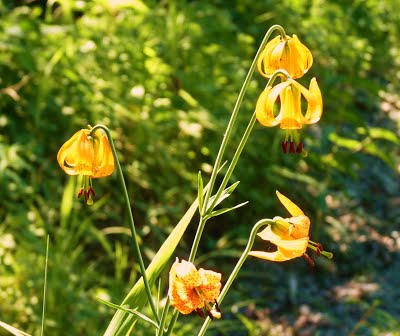ROCK CLIMBING
The historic Darrington climbing area has been explored by rock climbers since 1969 when Fred Beckey and party climbed the Witch Doctor Wall, which lies on "back side" of Exfoliation Dome, one of the most impressive features in the area. The Dome can be viewed from a viewpoint approximately 200 yards past the end of the maintained road at the Eightmile Creek trailhead.
In addition to Exfoliation Dome, popular destinations in the Clear Creek Drainage include Green Giant Buttress (made more difficult to access by a lack of maintenance of the last two miles of road in Copper Creek for over 15 years) and Three O'Clock Rock (the easiest to reach as it is actually served by a maintained trail - Eightmile Creek Trail 654). Clear Creek rock climbs range in difficulty from about 5.6 to 5.12, and one to twelve pitches.
The largest climbing objective in the area, Squire Creek Wall, lies in Squire Creek. The climbs in Squire Creek are generally harder to access and there are no easy routes. Climbs in Squire Creek range in difficulty from 5.8 to 5.11 , and four to twenty-three pitches. There are other crags in the Darrington area but Three O'Clock Rock in Clear Creek is a good place for climbers of unknown ability or new to the area go exploring.
For more route information in the Darrington area check out http://www.mattsea.com/Darr/
To learn more about upcoming rock climbing activities and events go to the Washington Climbers Coalition website.
BOULDERING
The climbing area traditionally called "Darrington" is a collection of granite domes in the Clear Creek and Squire Creek drainages south of the town of Darrington. Other climbing opportunities in the area include the "D-Ton Boulders," in the White Chuck River drainage about twelve miles southeast of town, and a crag and some boulders on the south slope of Spring Mountain, about eighteen miles southeast of town. Whitehorse Mountain, immediately southwest of town, makes an excellent ski outing in early season during years of high snow cover. The mountains in the area near Darrington include Glacier Peak, Sloan Peak, Whitechuck, and Three Fingers. There is plenty to do around here.
The mountain valleys around Darrington have a remote feel and, except along highway 530, cell phones generally do not work. The scenery is fantastic, and the climbing is varied. The area has seen steady climbing activity for nearly fifty years but rarely do any of these destinations become crowded. The granite in Clear Creek and Squire Creek features multiple pitch routes on generally clean granite with many leading to a summit. Bolt protection is common but traditional gear is generally required. The bouldering at D-Ton offers a variety of problems, mostly in shade, with a very short approach. Spring Mountain has climbs from one to seven pitches on heavily featured rock, with boulders in deep woods below the cliff. Just a few of the routes and boulders in the area are featured here.
Information on D-Ton Boulders and Spring Mountain is available on Mountain Project. Information about the climbing in Clear Creek (Green Giant Buttress, Three O'Clock Rock, Exfoliation Dome, and Squire Creek Wall) is there as well. A PDF guide is downloadable at www.mattsea.com/Darr .
Prime time climbing season is August
Below is an example of bouldering in Darrington.
WILD FLOWERS

Turk's Cap, Wild Tiger Lily, or Columbia Lily
Lilium columbianum is also known as Turk's Cap, Columbia Lily, or Tiger Lily. This strikingly beautiful wildflower grows along the backroads of the Darrington area, along trails and open meadows where it can capture a little moisture and sunlight. The Turk's Cap is widely distributed through southern British Columbia, southward to northern California and somewhat dispersed throughout the Columbia Valley.
The Turk's cap grows up to 5 feet but usually averages heights of around 3 feet. Sturdy stems arise from the corms of a bulb in late spring with bladed leaves. The flowers begin to bloom June and later into the season in higher elevations. The flowers are a showy bright yellow to deep orange color ornamented with maroon spots around the throat. Shortly after opening the tepels will curl back exposing chocolate-purple anthers and pronounced corolla.
March – June



